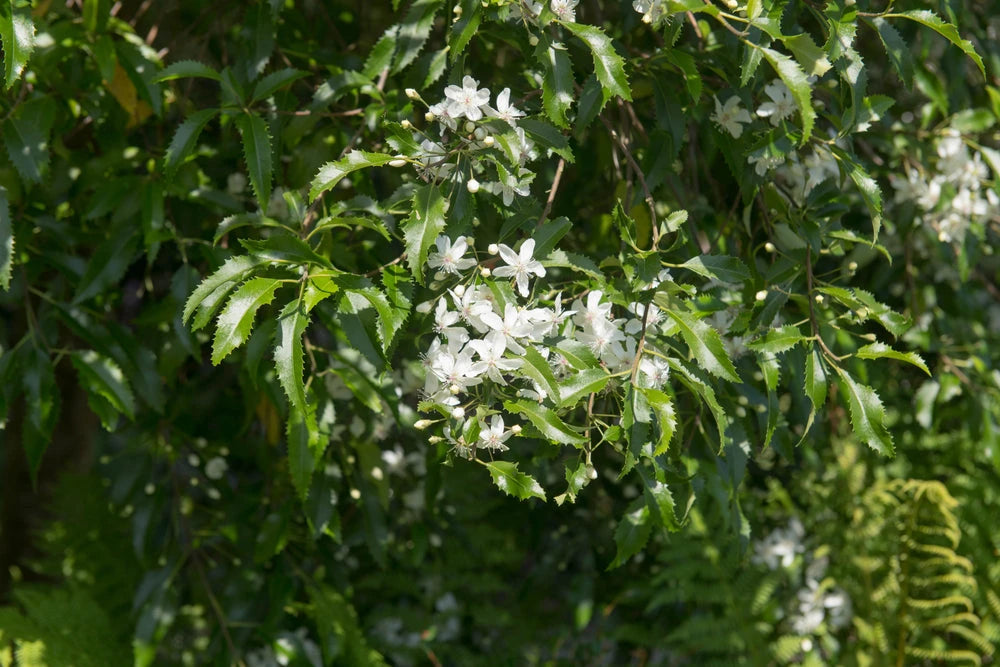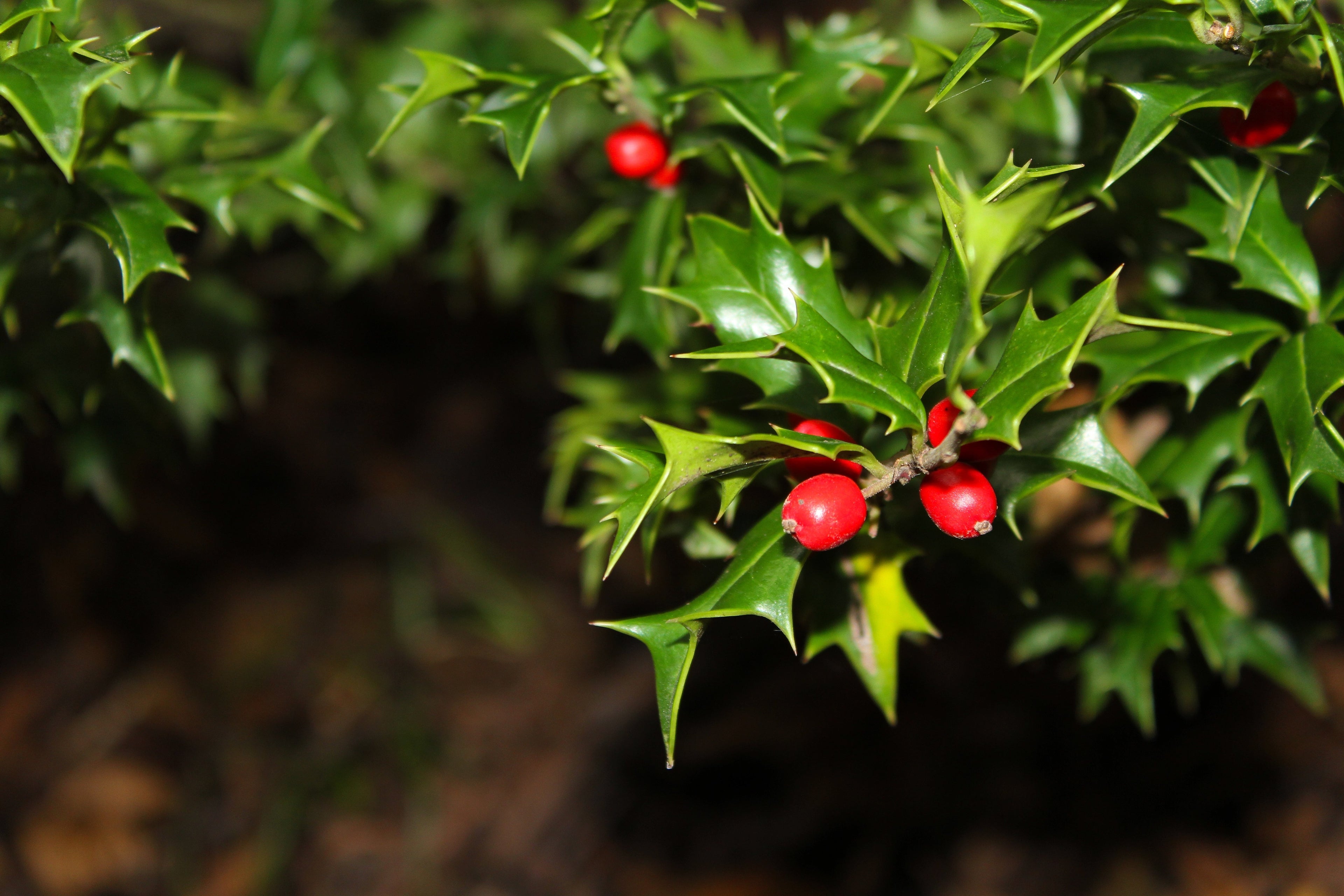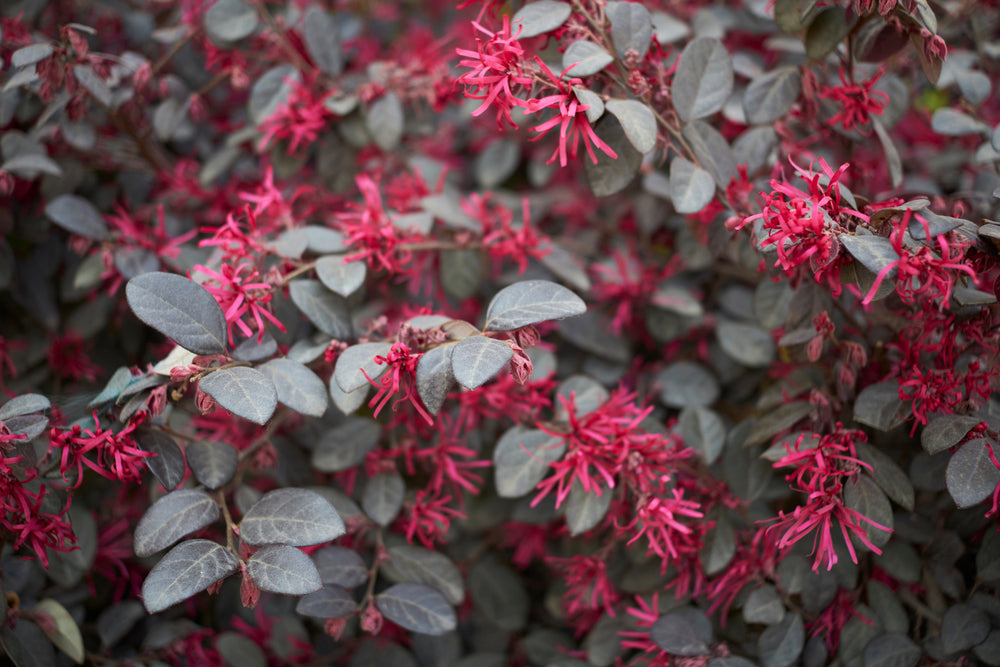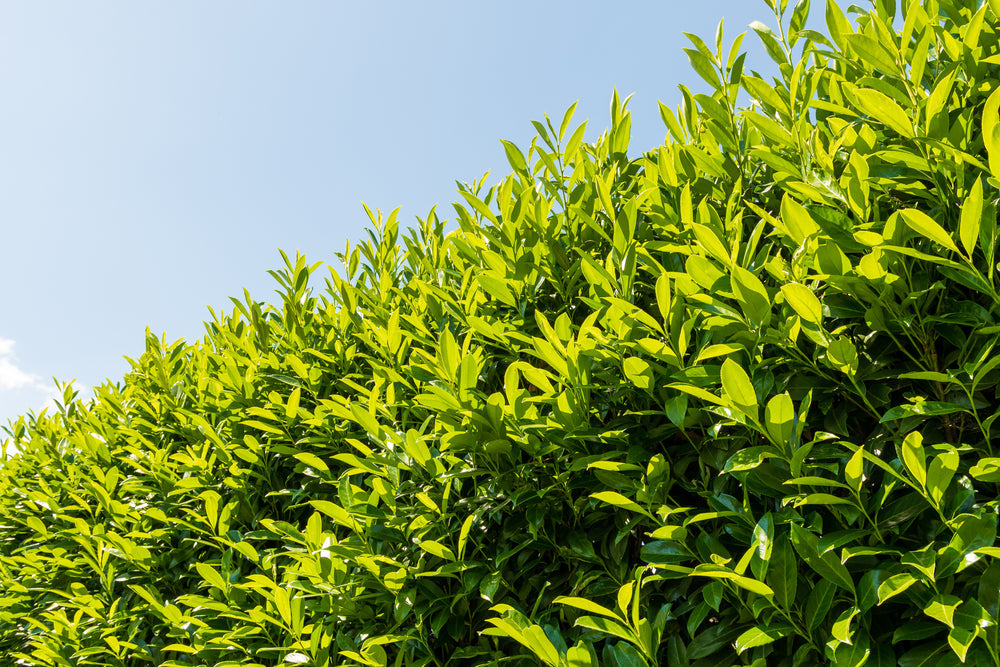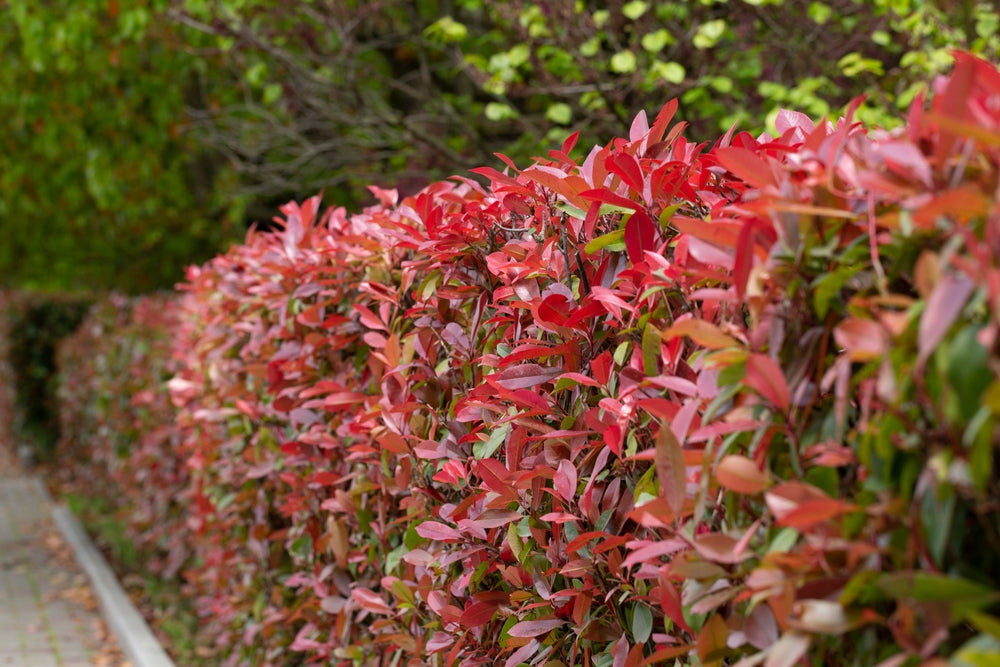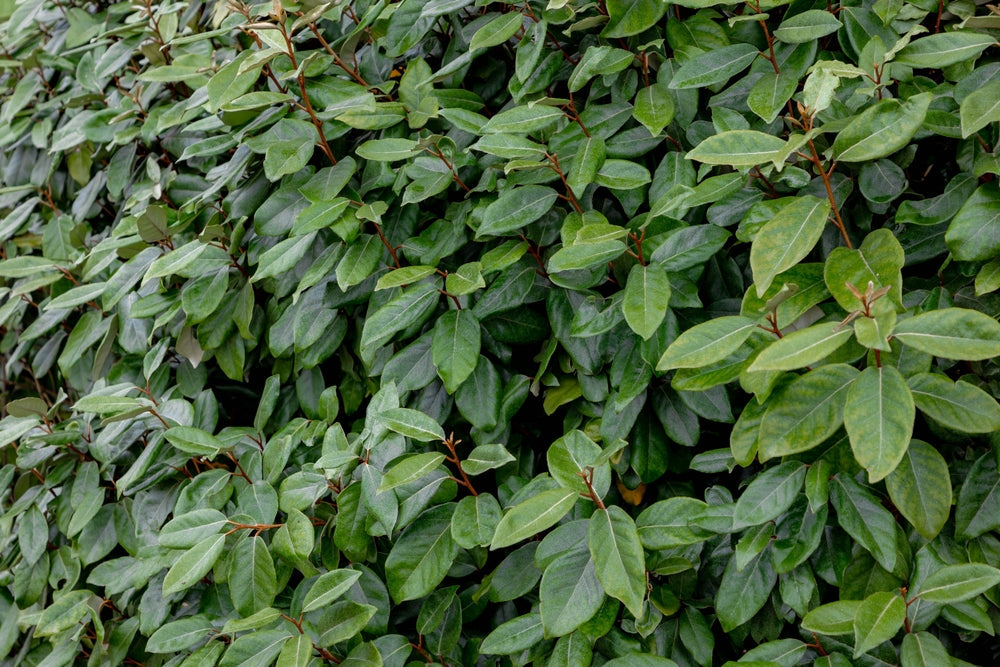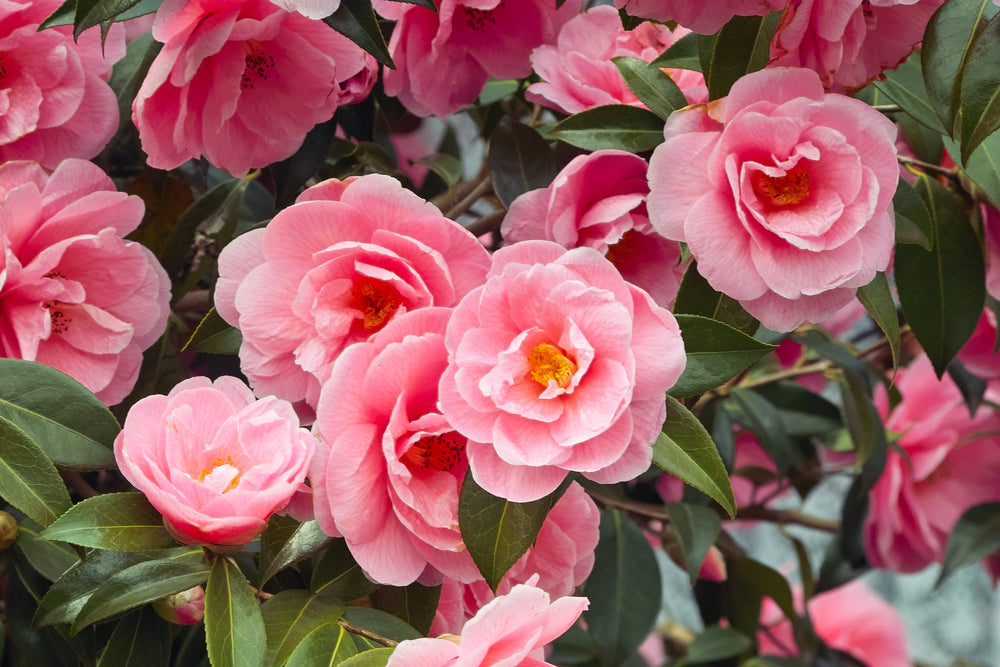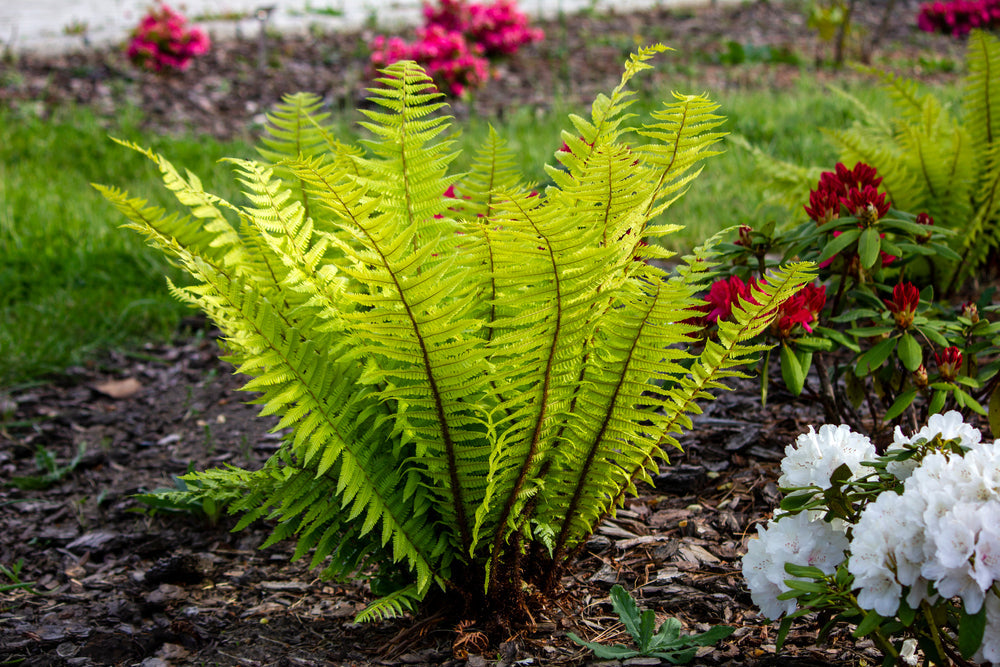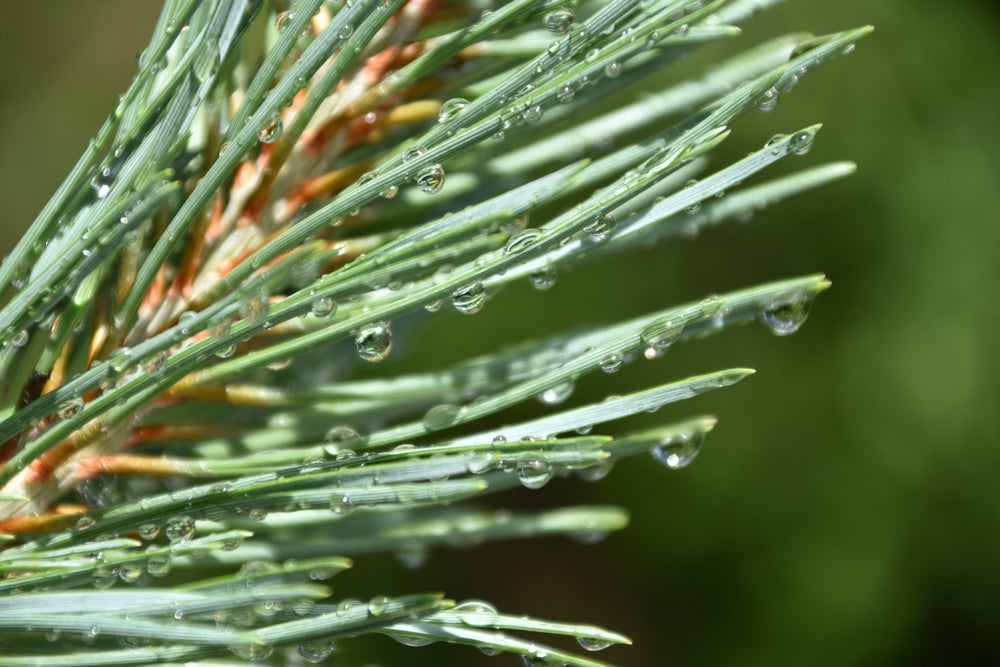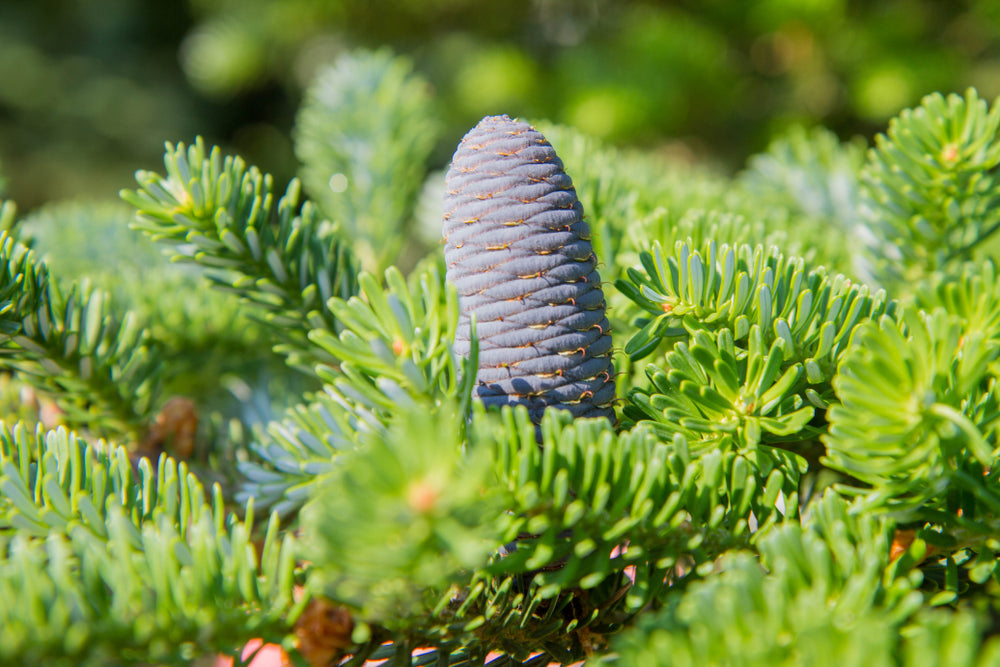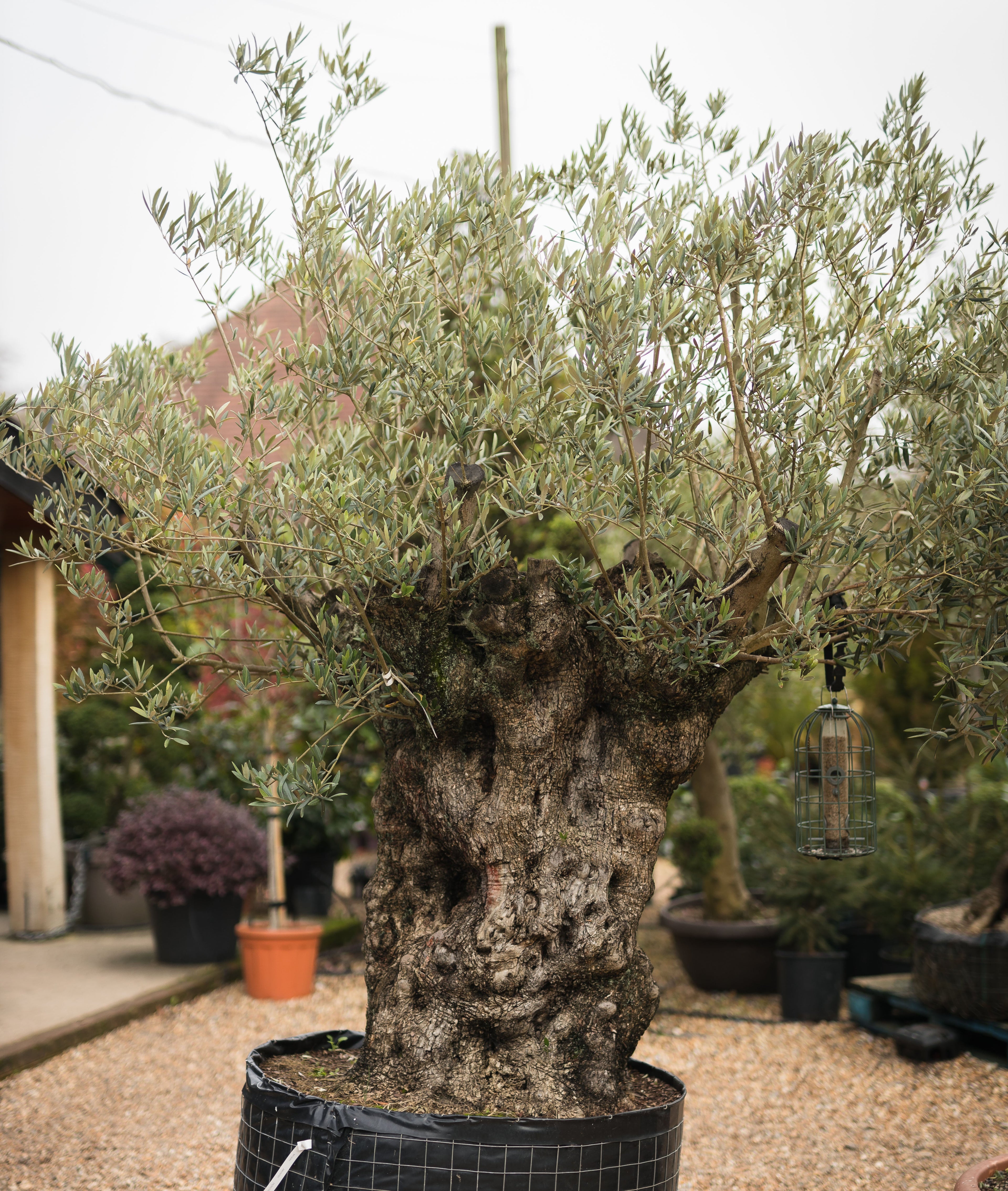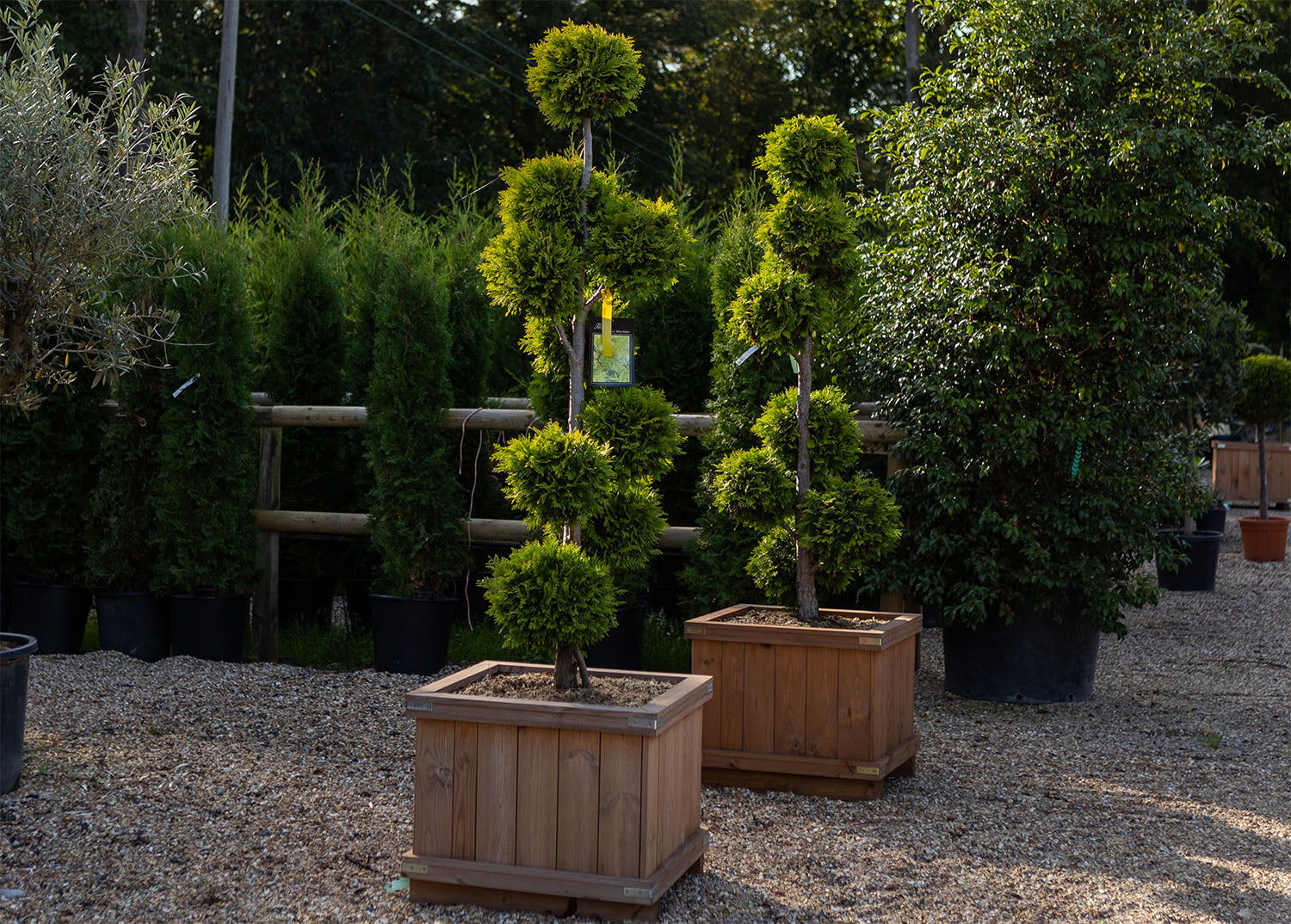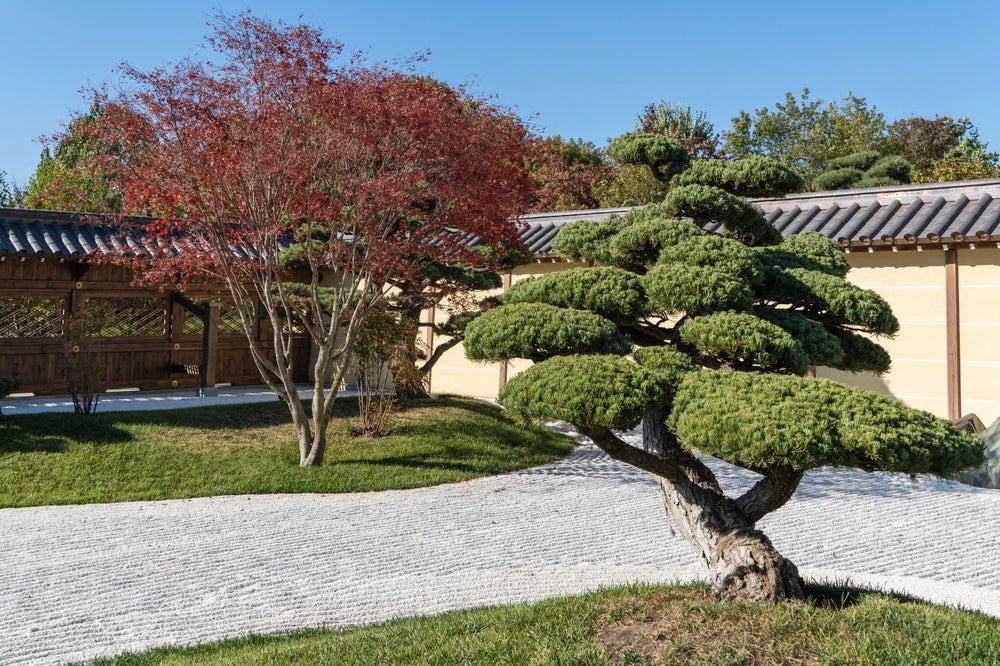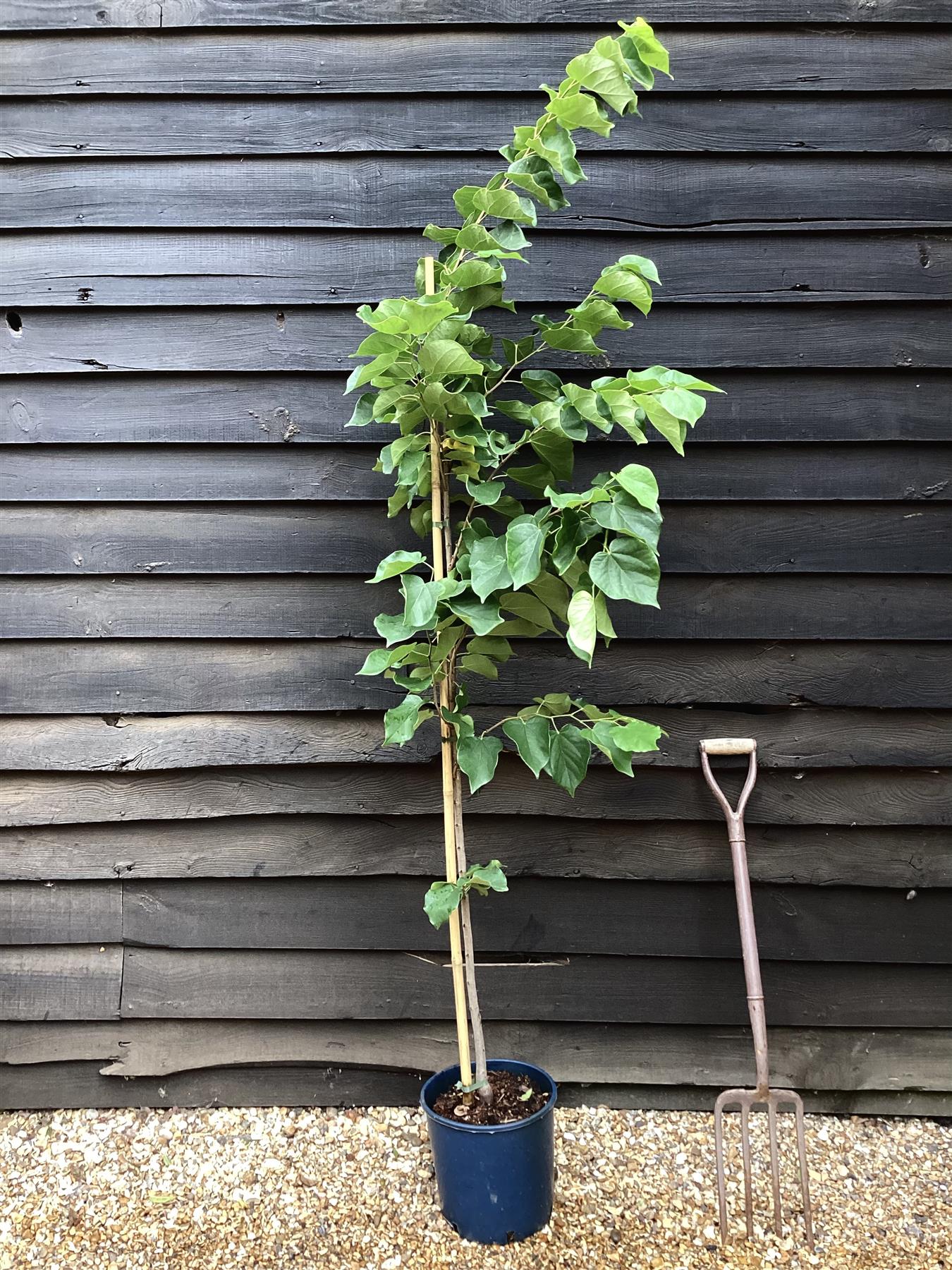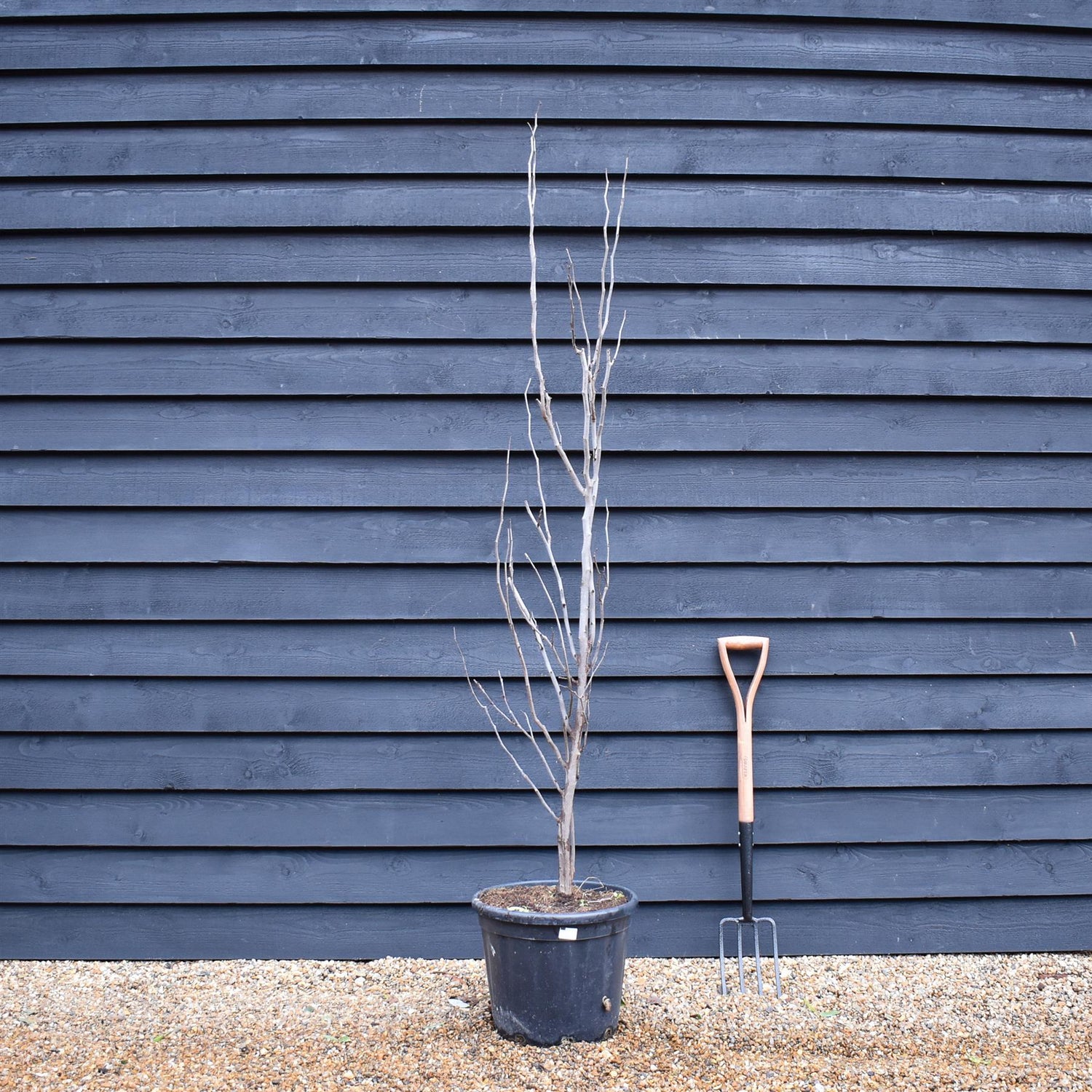12 products
12 products
Sort by:

Cercis siliquastrum | Judas tree - 220-230cm, 130lt
£495.00
Unit price perCercis siliquastrum | Judas tree - 220-230cm, 130lt
£495.00
Unit price per
Cercis canadensis 'Eternal Flame' | Redbud | Judas trees - Height 150-170cm - Bushy - 12lt
£148.00
Unit price perCercis canadensis 'Eternal Flame' | Redbud | Judas trees - Height 150-170cm - Bushy - 12lt
£148.00
Unit price perCercis canadensis 'Eternal Flame' is an exceptional cultivar of the Cercis canadensis species, commonly known as the Eastern Redbud. This compact, deciduous tree is prized for its outstanding features that bring beauty and vibrancy to any landscape.
One of the most striking attributes of 'Eternal Flame' is its remarkable display of flowers. In early spring, before the emergence of leaves, the branches become adorned with an abundance of stunning pink blossoms. These small, pea-like flowers cover the tree in a breathtaking spectacle, creating a focal point that captivates the eye and attracts pollinators such as bees and butterflies.
Beyond its remarkable floral display, 'Eternal Flame' offers an extended season of interest with its foliage. The heart-shaped leaves emerge in a rich shade of burgundy, transitioning to a vibrant red as they mature. The fiery-red foliage persists throughout the summer, maintaining its intensity and adding a warm and captivating touch to the surroundings. In autumn, the leaves transition to a lovely shade of yellow, providing a final burst of color before they drop.
This cultivar showcases a compact growth habit, making it suitable for smaller gardens or spaces. It typically reaches a height of 10-15 feet (3-4.5 meters) and spreads about 12-15 feet (3.6-4.5 meters) wide. Its size and form make it an excellent choice for urban landscapes, borders, or as a specimen tree in a prominent location.
Cercis canadensis 'Eternal Flame' is adaptable to a variety of soil types but thrives in well-drained, fertile soil. It prefers full sun to partial shade, although it can tolerate some shade. It is relatively low-maintenance, requiring regular watering during dry periods and occasional pruning to maintain its shape.
In conclusion, Cercis canadensis 'Eternal Flame' is a remarkable tree that stands out with its vibrant pink flowers, long-lasting fiery-red foliage, and compact growth habit. With its multi-season interest and ease of care, it is a valuable addition to any garden or landscape, providing year-round beauty and charm.
Cercis chinensis Shirobana- Height 180-220cm - Bushy - 10lt
£150.00
Unit price perCercis chinensis Shirobana- Height 180-220cm - Bushy - 10lt
£150.00
Unit price perCercis chinensis 'Shirobana,' commonly referred to as Chinese Redbud 'Shirobana,' is an exceptional and eye-catching ornamental tree that can grace British gardens and landscapes with its unique and captivating features. Originally hailing from China, this cultivar has garnered international acclaim for its remarkable characteristics.
One of the most remarkable attributes of 'Shirobana' is its blossoms. During the spring season, prior to the emergence of its leaves, this tree adorns itself with a profusion of delicate, butterfly-like flowers. What sets it apart is its ability to produce different-colored blossoms on the same tree simultaneously, creating a spectacular display of colour variation that is truly enchanting.
The name 'Shirobana' translates to "white flower," underscoring the tree's ability to produce these stunning pale blooms alongside the usual pink and lavender ones. This unique trait makes 'Shirobana' particularly desirable for garden enthusiasts seeking to introduce an element of whimsy and diversity to their outdoor spaces.
The foliage of 'Shirobana' typically takes on a heart-shaped form and exhibits a medium green hue, serving as a splendid backdrop to the lavish spring blossoms. As the leaves mature, they may acquire a glossy sheen, adding to the tree's visual appeal. This deciduous tree usually reaches a height of around 3 to 4 meters and forms an elegant, gracefully-rounded canopy.
Maintaining Cercis chinensis 'Shirobana' in the UK is relatively straightforward. It thrives in well-drained soil and prefers a location that receives ample sunlight or partial shade. Ensuring adequate watering during dry spells and regular mulching to conserve moisture are key to its overall health and vitality. Pruning requirements are typically minimal, primarily focused on shaping the tree or removing any dead or overcrowded branches.
One of the advantages of 'Shirobana' is its notable resistance to common pests and diseases, contributing to its low-maintenance nature. Additionally, it exhibits adaptability to various soil types, making it a versatile choice for a wide range of garden settings.
In conclusion, Cercis chinensis 'Shirobana' is an extraordinary ornamental tree that can bring a sense of wonder and diversity to British gardens. Its multi-coloured spring blossoms, heart-shaped leaves, and manageable size make it an enchanting addition to landscapes, providing an opportunity for gardeners to experience the ever-changing palette of nature. Whether used as a focal point or to infuse charm into garden borders, 'Shirobana' is certain to captivate the hearts of those who encounter its mesmerizing beauty.
Cercis canadensis 'Ruby Falls' | Eastern Redbud - Twisted stem - Height 160-180cm - 30lt
£255.00
Unit price perCercis canadensis 'Ruby Falls' | Eastern Redbud - Twisted stem - Height 160-180cm - 30lt
£255.00
Unit price perCercis canadensis 'Ruby Falls', also known as the Ruby Falls Redbud, is an eye-catching, weeping variety of the Eastern Redbud tree. This cultivar stands out with its unique, cascading growth habit and striking foliage. The heart-shaped leaves emerge in a vibrant shade of ruby-red in spring, gradually maturing to deep purple as the season progresses. In early spring, before the foliage unfurls, the bare branches are adorned with a profusion of small, rosy-pink flowers, creating a breathtaking display. 'Ruby Falls' features a clear stem or trunk, which elevates the weeping canopy, making it an excellent focal point in landscape designs. It's a compact, deciduous tree, perfect for small gardens and spaces where a dramatic vertical element is desired. Its resilience and relatively low maintenance make it a favored choice among gardeners seeking a tree with year-round visual interest.
Cercis canadensis | Eastern Redbud - Semi-Mature Feathered - Height 160-180cm - 30lt
£255.00
Unit price perCercis canadensis | Eastern Redbud - Semi-Mature Feathered - Height 160-180cm - 30lt
£255.00
Unit price perCercis canadensis 'Ruby Falls', also known as the Ruby Falls Redbud, is an eye-catching, weeping variety of the Eastern Redbud tree. This cultivar stands out with its unique, cascading growth habit and striking foliage. The heart-shaped leaves emerge in a vibrant shade of ruby-red in spring, gradually maturing to deep purple as the season progresses. In early spring, before the foliage unfurls, the bare branches are adorned with a profusion of small, rosy-pink flowers, creating a breathtaking display. 'Ruby Falls' features a clear stem or trunk, which elevates the weeping canopy, making it an excellent focal point in landscape designs. It's a compact, deciduous tree, perfect for small gardens and spaces where a dramatic vertical element is desired. Its resilience and relatively low maintenance make it a favored choice among gardeners seeking a tree with year-round visual interest.

Cercis canadensis - 330-350cm - Clear Stem - Girth 8-10cm - 45lt
£235.00
Unit price perCercis canadensis - 330-350cm - Clear Stem - Girth 8-10cm - 45lt
£235.00
Unit price perThe Cercis canadensis, commonly known as the Eastern Redbud, is a charming deciduous tree that adds elegance and colour to any garden landscape. Originating from North America, it has found popularity in gardens across the UK for its ornamental beauty and adaptability to various growing conditions.
Its distinctive feature is its heart-shaped leaves, which emerge in spring in a vibrant shade of green, turning to a luscious yellow in autumn, offering a spectrum of seasonal interest. Moreover, in early spring, the tree bursts into a display of delicate, rosy-pink flowers, adorning its bare branches before the leaves emerge, making it a captivating focal point.
Cercis canadensis thrives in well-drained soil and prefers a sunny or partially shaded position, although it can tolerate some shade. It is relatively low-maintenance, requiring minimal pruning except for occasional shaping and removal of dead or damaged branches.
It attracts pollinators such as bees and butterflies with its abundant nectar-rich flowers, contributing to the biodiversity of the garden. Additionally, its foliage provides shelter for birds and small mammals, enhancing the overall ecosystem.
In terms of landscape use, the Eastern Redbud is versatile and can be employed as a standalone specimen tree, planted in groups for a striking display, or integrated into mixed borders for added interest. Its small size makes it suitable for urban gardens, where space may be limited, while its visual impact makes it equally suitable for larger rural settings.
Overall, the Cercis canadensis is a delightful addition to any garden, offering year-round beauty, ecological benefits, and ease of cultivation. Whether as a focal point or a supporting element in a garden design, its graceful presence is sure to enchant both gardeners and admirers alike.
Judas tree | Cercis siliquastrum - Girth 5-6cm - 290-300cm - 30lt
£225.00
Unit price perJudas tree | Cercis siliquastrum - Girth 5-6cm - 290-300cm - 30lt
£225.00
Unit price perJudas tree | Cercis siliquastrum - Girth 8-10cm - 400-440cm - Clear Stem - 45lt
£295.00
Unit price perJudas tree | Cercis siliquastrum - Girth 8-10cm - 400-440cm - Clear Stem - 45lt
£295.00
Unit price perCercis siliquastrum White Swan - Height 170-200cm - Bushy - 10lt
£150.00
Unit price perCercis siliquastrum White Swan - Height 170-200cm - Bushy - 10lt
£150.00
Unit price perCercis siliquastrum 'White Swan' is a captivating cultivar of the Judas tree that offers a unique twist on this beloved ornamental tree species. This cultivar has distinctive characteristics that set it apart, making it a sought-after addition to gardens in the UK.
The most striking feature of 'White Swan' is its spring blossoms. In contrast to the typical magenta-pink flowers of the Judas tree, 'White Swan' surprises with a profusion of pure white blossoms in early to mid-spring. These white flowers create a stunning contrast against the tree's heart-shaped, medium-green leaves, making 'White Swan' an eye-catching focal point in any garden.
The name "Judas tree" is associated with the belief that Judas Iscariot hanged himself from a tree of this species, and 'White Swan' adds a touch of intrigue and historical mystique to this tradition.
In terms of size and form, 'White Swan' maintains the characteristic small to medium stature of the Judas tree, typically reaching a height of 3 to 4 meters. Its growth habit is rounded, and its branches often develop a graceful, spreading form, providing an elegant and symmetrical canopy.
Caring for Cercis siliquastrum 'White Swan' in the UK is generally straightforward. It thrives in well-drained soil and prefers a location that receives full sun to partial shade. Adequate watering, especially during dry periods and its establishment phase, is crucial for its overall health and vigour. Pruning requirements are typically minimal and primarily focus on shaping the tree or removing any dead or diseased branches.
'White Swan' is known for its resilience and resistance to common pests and diseases, making it a relatively low-maintenance ornamental tree. Its adaptability to various soil types further enhances its versatility in different garden settings.
In conclusion, Cercis siliquastrum 'White Swan' is a captivating and unique cultivar that adds a touch of elegance and purity to British gardens. Its stunning white spring blossoms, heart-shaped leaves, and modest size make it a highly desirable choice for gardeners looking to introduce a distinctive and visually stunning element to their landscapes. Whether used as a centrepiece or to infuse a garden with a sense of wonder, 'White Swan' is sure to captivate and inspire all who encounter its enchanting beauty.
Cercis chinensis Shirobana- Height 170-220cm - Bushy - 10lt
£150.00
Unit price perCercis chinensis Shirobana- Height 170-220cm - Bushy - 10lt
£150.00
Unit price perCercis siliquastrum 'Bodnant' is a remarkable variety of the Judas tree that brings a burst of color and charm to British gardens. Native to Southern Europe and Western Asia, this cultivar is celebrated for its captivating features and suitability for the UK climate.
The most striking attribute of 'Bodnant' is its spring blossoms. In early to mid-spring, before its heart-shaped leaves unfurl, this tree is adorned with an abundance of vivid magenta-pink flowers. These blossoms are not only visually stunning but also highly attractive to pollinators like bees and butterflies, making 'Bodnant' a valuable addition to biodiversity in the garden.
The name 'Judas tree' is derived from folklore, suggesting that Judas Iscariot hanged himself from a tree of this species. 'Bodnant' adds a touch of history and intrigue to the garden with its association to this biblical tale.
In addition to its vibrant blooms, 'Bodnant' showcases lush, heart-shaped leaves that are deep green in colour. These leaves provide an attractive backdrop for the spring blossoms and maintain their appeal throughout the growing season. The overall form of 'Bodnant' is relatively small, typically reaching a height of 3 to 4 meters, making it suitable for gardens with limited space.
Caring for Cercis siliquastrum 'Bodnant' in the UK is generally uncomplicated. It prefers well-drained soil and a location that receives full sun to partial shade. Adequate watering during dry spells is essential for its health, especially during its establishment period. Pruning is usually minimal, primarily for shaping and removing any dead or diseased branches.
The 'Bodnant' variety of Judas tree is known for its hardiness and resistance to pests and diseases, which adds to its appeal as a low-maintenance ornamental tree. Its adaptability to various soil types makes it a versatile choice for different garden settings.
In conclusion, Cercis siliquastrum 'Bodnant' is a captivating ornamental tree that graces UK gardens with its vibrant spring blossoms, heart-shaped leaves, and compact size. Its historical and cultural associations, along with its natural beauty, make it a popular choice for gardeners looking to enhance their landscapes with a touch of elegance and tradition. Whether used as a focal point or to infuse colour into garden borders, 'Bodnant' is sure to delight and inspire those who encounter its enchanting presence.
Cercis canadensis 'Forest Pansy' -Height 150-200cm - 12lt
£125.00
Unit price perCercis canadensis 'Forest Pansy' -Height 150-200cm - 12lt
£125.00
Unit price perCercis chinensis 'Avondale' - Height 150-200cm - 10lt
£106.00
Unit price perCercis chinensis 'Avondale' - Height 150-200cm - 10lt
£106.00
Unit price per



















